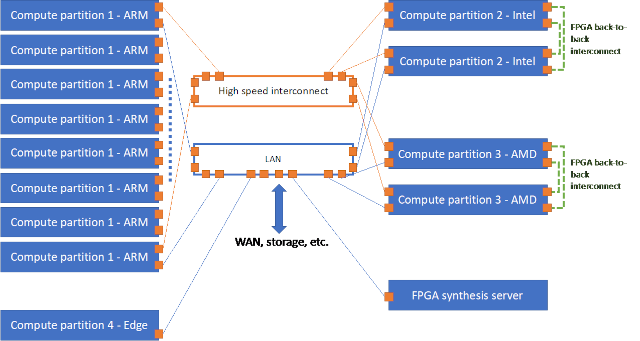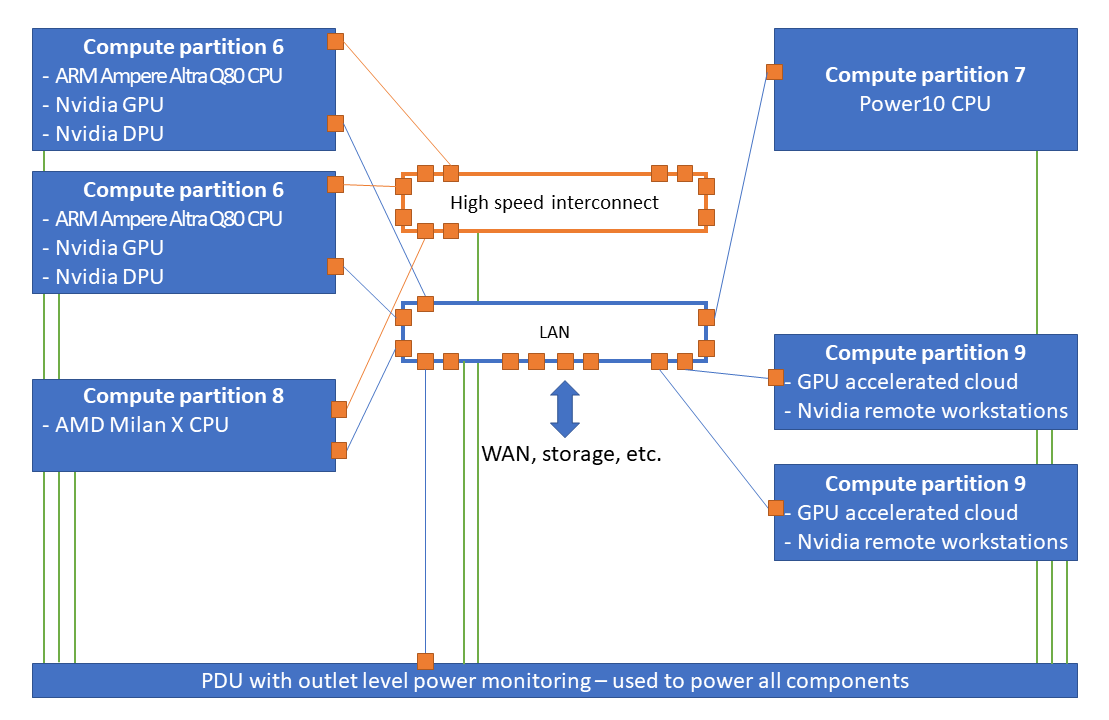Introduction¶
Complementary systems offer development environment for users that need to port and optimize their code and applications for various hardware architectures and software technologies that are not available on standard clusters.
Complementary Systems 1¶
First stage of complementary systems implementation comprises of these partitions:
- compute partition 0 – based on ARM technology - legacy
- compute partition 1 – based on ARM technology - A64FX
- compute partition 2 – based on Intel technologies - Ice Lake, NVDIMMs + Bitware FPGAs
- compute partition 3 – based on AMD technologies - Milan, MI100 GPUs + Xilinx FPGAs
- compute partition 4 – reflecting Edge type of servers
- partition 5 – FPGA synthesis server

Complementary Systems 2¶
Second stage of complementary systems implementation comprises of these partitions:
- compute partition 6 - based on ARM technology + CUDA programmable GPGPU accelerators on ampere architecture + DPU network processing units
- compute partition 7 - based on IBM Power10 architecture
- compute partition 8 - modern CPU with a very high L3 cache capacity (over 750MB)
- compute partition 9 - virtual GPU accelerated workstations
- compute partition 10 - Sapphire Rapids-HBM server
- compute partition 11 - NVIDIA Grace CPU Superchip

Modules and Architecture Availability¶
Complementary systems list available modules automatically based on the detected architecture.
However, you can load one of the three modules -- aarch64, avx2, and avx512 --
to reload the list of modules available for the respective architecture:
[user@login.cs ~]$ ml architecture/aarch64
aarch64 modules + all modules
[user@login.cs ~]$ ml architecture/avx2
avx2 modules + all modules
[user@login.cs ~]$ ml architecture/avx512
avx512 modules + all modules